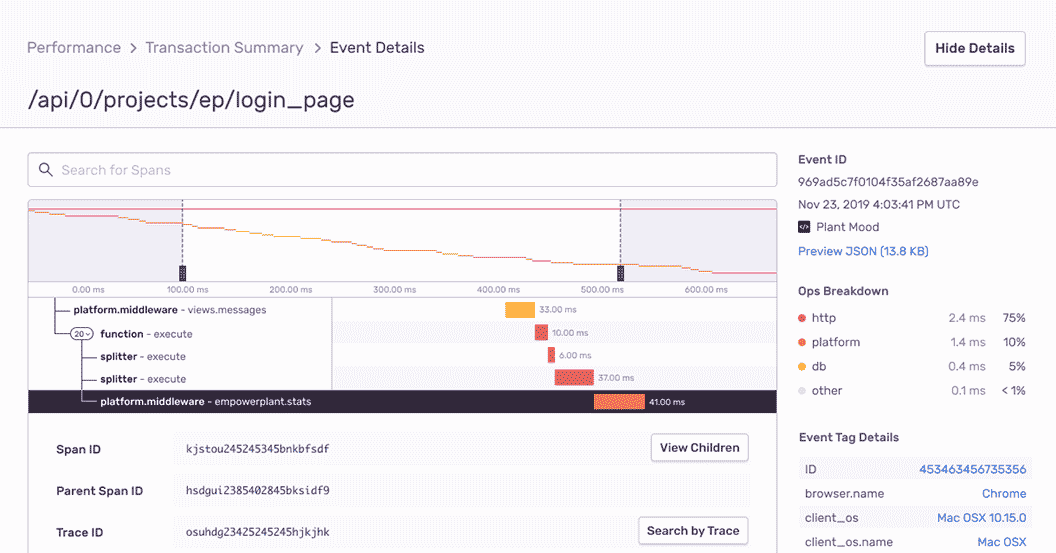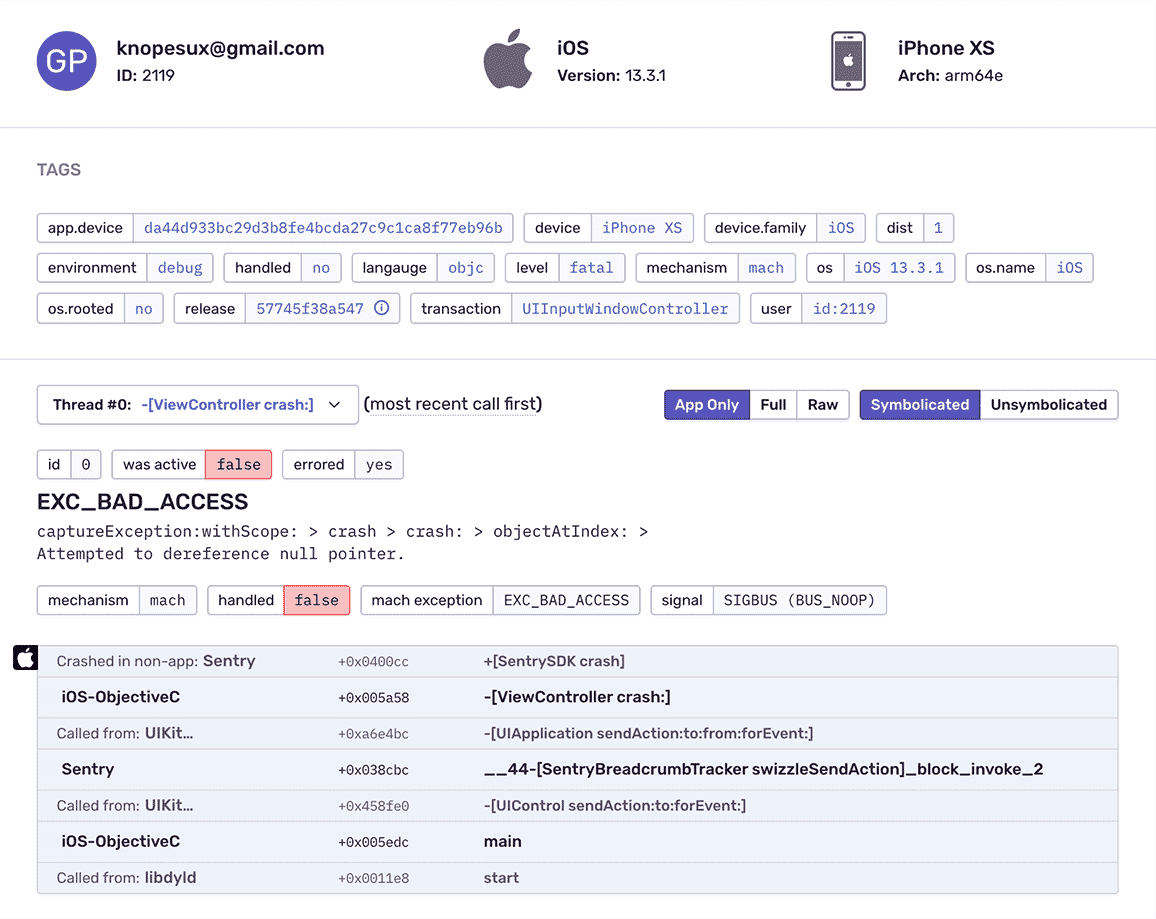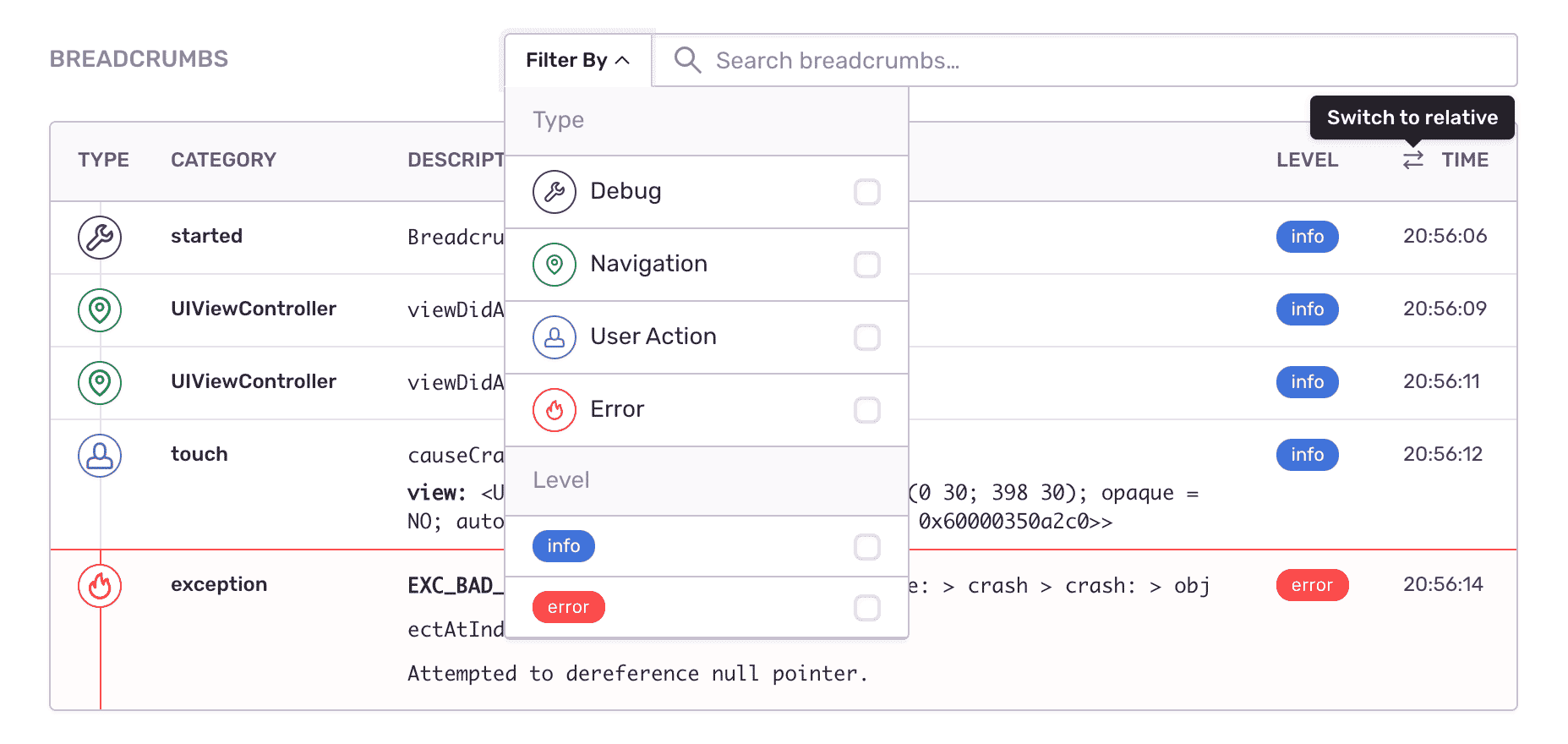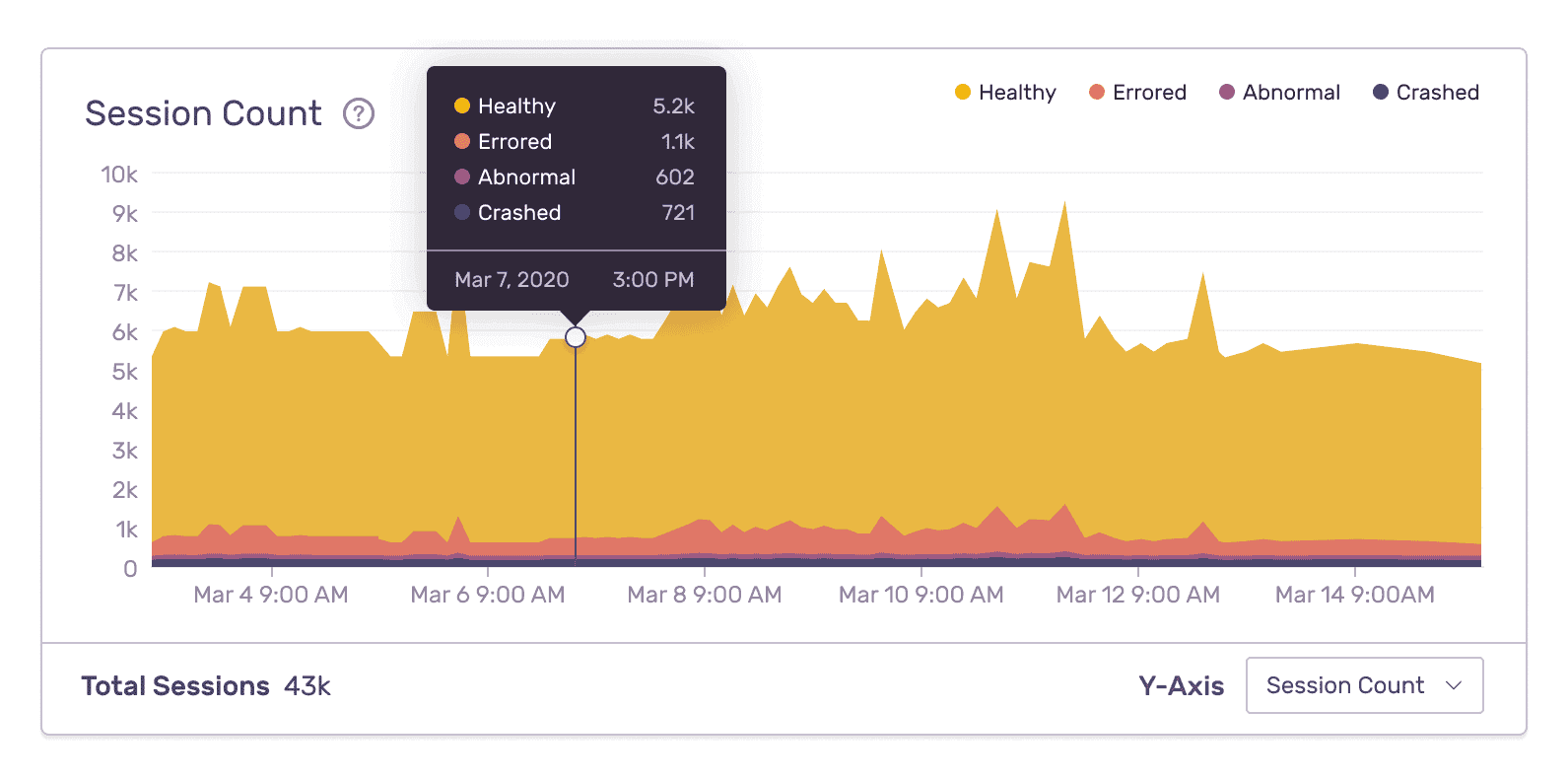
Objective-C Error & Performance Monitoring
Sentry automatically captures crashes recorded on macOS, iOS, and tvOS. See Objective-C error details like function, filename, and line number without ever digging through iOS crash logs.
Getting Started is Simple
To integrate Sentry into your Xcode project, specify it in your Podfile, then run pod install:
platform :ios, '9.0' use_frameworks! # This is important target 'YourApp' do pod 'Sentry', :git => 'https://github.com/getsentry/sentry-cocoa.git', :tag => '8.53.2' end
Initialize the SDK as soon as possible in your application lifecycle, such as in your AppDelegate application:didFinishLaunchingWithOptions method:
@import Sentry; - (BOOL)application:(UIApplication *)application didFinishLaunchingWithOptions:(NSDictionary *)launchOptions { [SentrySDK startWithConfigureOptions:^(SentryOptions *options) { options.dsn = @"https://<key>@sentry.io/<project>"; options.debug = @YES; // Enabled debug when first installing is always helpful // Example uniform sample rate: capture 100% of transactions for Tracing options.tracesSampleRate = @1.0; }]; return YES; }
Check our documentation for the latest instructions.
See all platforms
Objective-C Performance Monitoring
Within minutes after installing Sentry, software teams are able to trace Objective-C performance issues back to a poor performing API call as well as surface all related code errors. Engineering Managers and Developers now have a single tool to optimize the performance of their code and deliver fast customer experiences with Performance Monitoring.

Get iOS Crash Reporting With Complete Stack Traces
Reveal hidden context in Apple’s incomplete crash data by automatically symbolicating unreadable symbols. Handle Objective-C iOS crashes with complete context using the React Native SDK while the Objective-C SDK runs in the background.

Fill In The Blanks About iOS Crashes
See what the app was doing when the iOS crash occurred: every user action, controller changes, and custom breadcrumbs. Record events when devices are offline or in airplane mode, then send crash reports as soons as connection is regained.

Resolve iOS Crashes With Better Data
Improve Objective-C error monitoring workflow with a full view of releases so you can mark errors as resolved and prioritize live issues. Learn in which version bug first appeared, merge duplicates, and know if things regress in a future release. Add commit data to automatically suggest an owner of each iOS crash and instantly send deploy emails.
“Being able to use Sentry to monitor the performance as well as our mobile applications is important. Using one solution to monitor the entire application stack gives our engineers the visibility they need to deliver a first-rate experience for our customers.”
See The Full Picture Of Any Objective-C Exception
See what the app was doing when the iOS crash occurred
Find answers to the key questions and insights need to resolve the issue
How actionable is this crash? What was the device? Has this same crash occurred before?
FAQs
Sentry supports every major language, framework, and library. You can browse each of them here.
You can get started for free. Pricing depends on the number of monthly events, transactions, and attachments that you send Sentry. For more details, visit our pricing page.
Sentry doesn’t impact a web site’s performance.
If you look at the configuration options for when you initialize Sentry in your code, you’ll see there’s nothing regarding minimizing its impact on your app’s performance. This is because our team of SDK engineers already developed Sentry with this in mind.
Sentry is a listener/handler for errors that asynchronously sends out the error/event to Sentry.io. This is non-blocking. The error/event only goes out if this is an error.
Global handlers have almost no impact as well, as they are native APIs provided by the browsers.
Supporting Resources
A better experience for your users. An easier life for your developers.
A peek at your privacy
Here’s a quick look at how Sentry handles your personal information (PII).
×Who we collect PII from
We collect PII about people browsing our website, users of the Sentry service, prospective customers, and people who otherwise interact with us.
What if my PII is included in data sent to Sentry by a Sentry customer (e.g., someone using Sentry to monitor their app)? In this case you have to contact the Sentry customer (e.g., the maker of the app). We do not control the data that is sent to us through the Sentry service for the purposes of application monitoring.
Am I included?PII we may collect about you
- PII provided by you and related to your
- Account, profile, and login
- Requests and inquiries
- Purchases
- PII collected from your device and usage
- PII collected from third parties (e.g., social media)
How we use your PII
- To operate our site and service
- To protect and improve our site and service
- To provide customer care and support
- To communicate with you
- For other purposes (that we inform you of at collection)
Third parties who receive your PII
We may disclose your PII to the following type of recipients:
- Subsidiaries and other affiliates
- Service providers
- Partners (go-to-market, analytics)
- Third-party platforms (when you connect them to our service)
- Governmental authorities (where necessary)
- An actual or potential buyer
We use cookies (but not for advertising)
- We do not use advertising or targeting cookies
- We use necessary cookies to run and improve our site and service
- You can disable cookies but this can impact your use or access to certain parts of our site and service
Know your rights
You may have the following rights related to your PII:
- Access, correct, and update
- Object to or restrict processing
- Port over
- Opt-out of marketing
- Be forgotten by Sentry
- Withdraw your consent
- Complain about us
If you have any questions or concerns about your privacy at Sentry, please email us at compliance@sentry.io.
If you are a California resident, see our Supplemental notice.